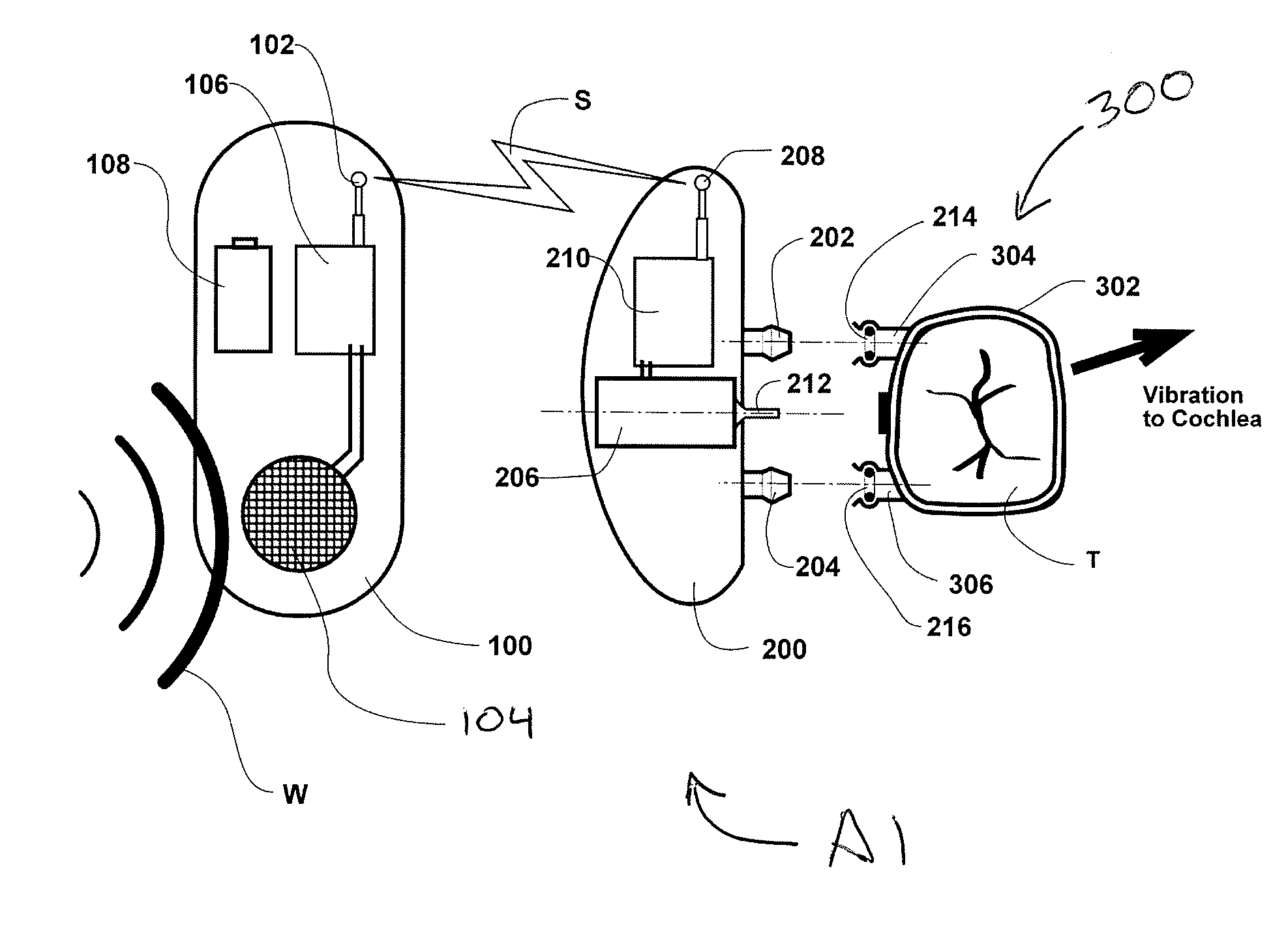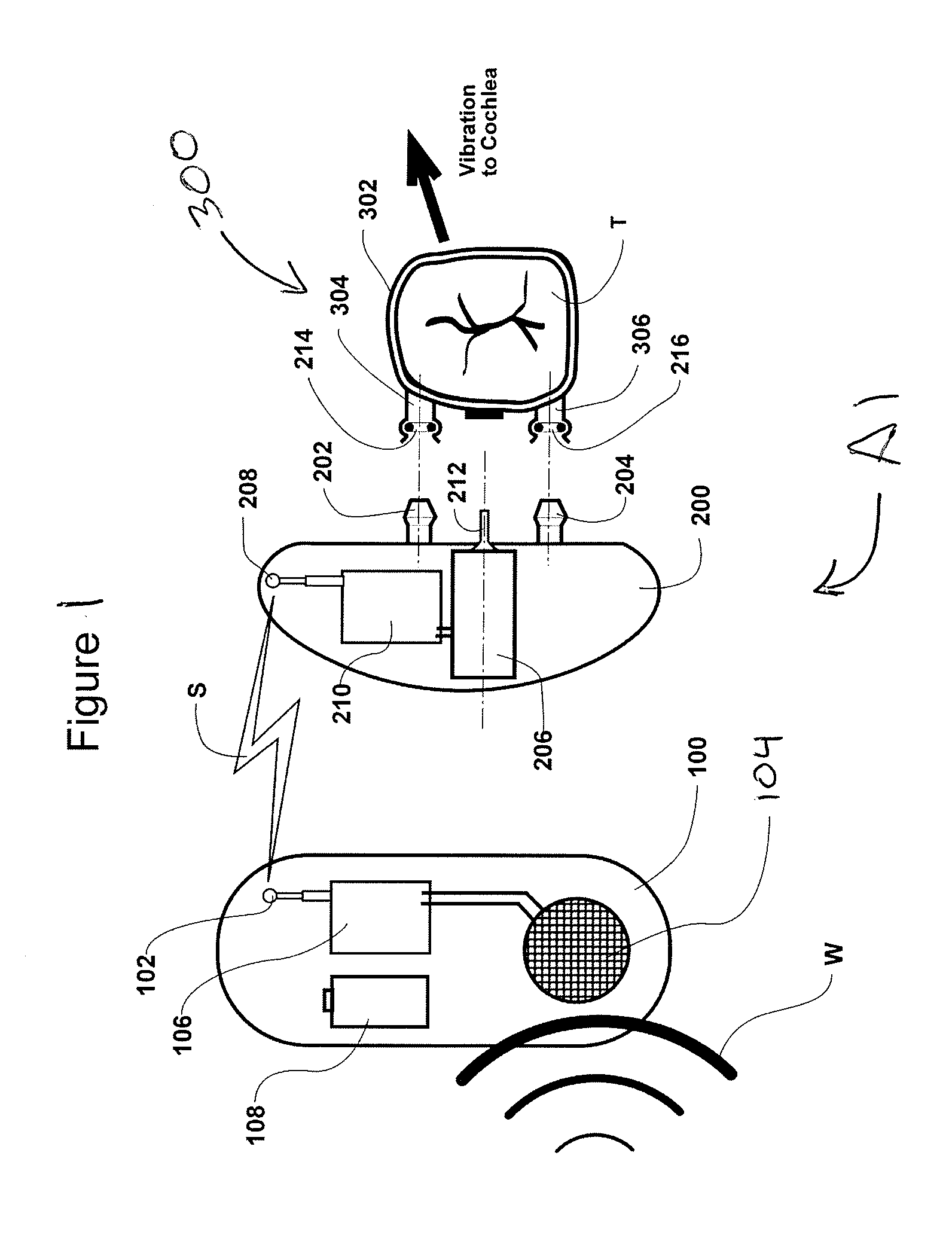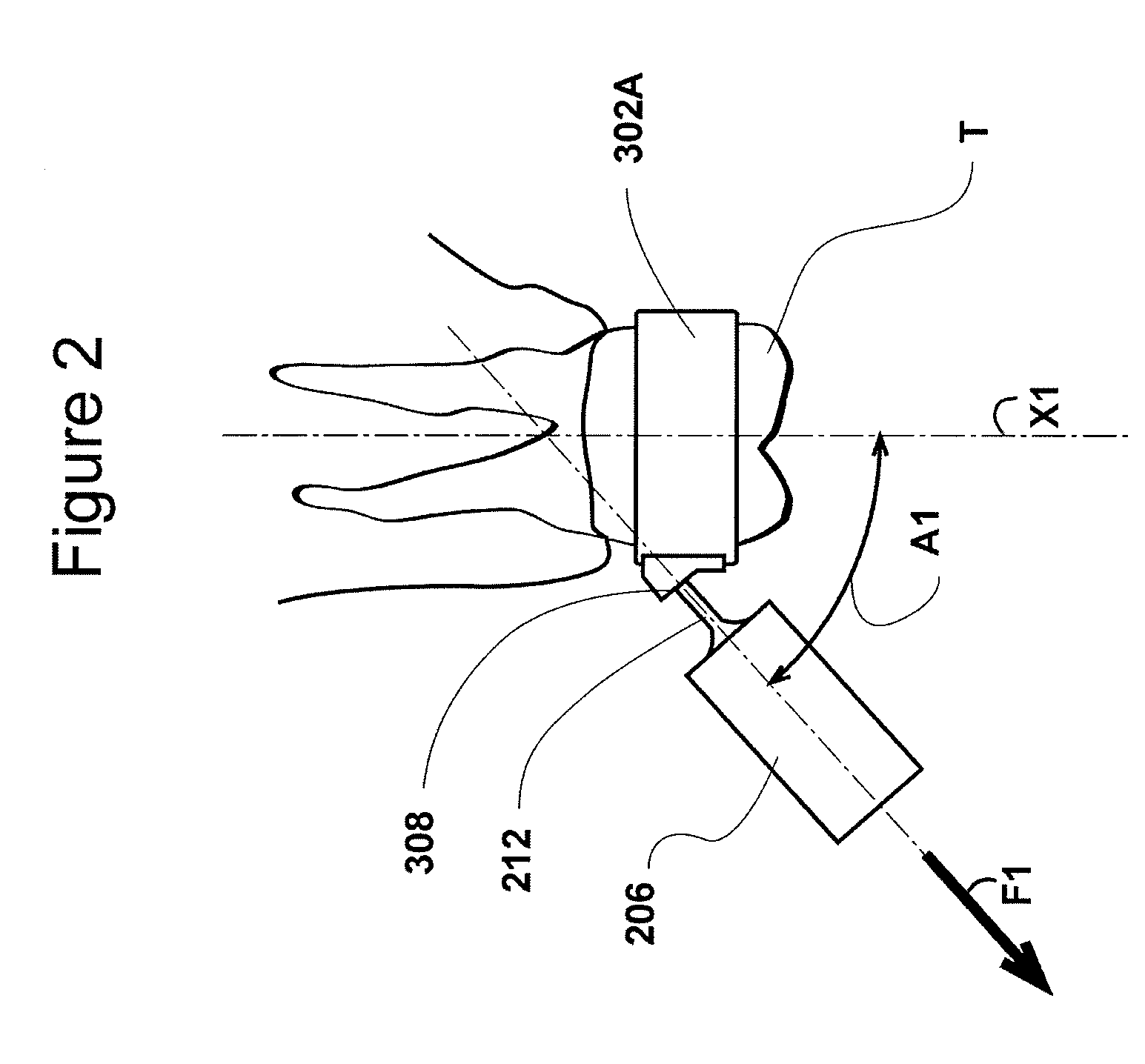Hearing Aid Apparatus and Method
- Summary
- Abstract
- Description
- Claims
- Application Information
AI Technical Summary
Benefits of technology
Problems solved by technology
Method used
Image
Examples
Embodiment Construction
[0031]The “dental bone conduction pathway” may be considered a sub-pathway of the widely recognized non-acoustic “bone conduction pathway” for sound transmission to the hearing nerve. As used in this invention, the phrase “dental bone conduction pathway,” relates to non-acoustic sound (vibration) that originates in structures of the mouth, nose, and oro-pharynx and is ultimately perceived at the hearing nerve. Speech sounds and chewing sounds, for example, travel to the hearing nerve via the “dental bone conduction pathway.” By contrast, loud ambient helicopter-like noise that penetrates the skin over the entire skull, neck, and body and can be considered noise arriving at the hearing nerve via the bone conduction pathway. Similarly, standard bone conduction audiometry with skull stimulation at the mastoid or forehead uses the general “bone conduction pathway,” as compared to the specific dental bone conduction pathway.
[0032]The distinction between conduction pathways is relevant du...
PUM
 Login to View More
Login to View More Abstract
Description
Claims
Application Information
 Login to View More
Login to View More - R&D
- Intellectual Property
- Life Sciences
- Materials
- Tech Scout
- Unparalleled Data Quality
- Higher Quality Content
- 60% Fewer Hallucinations
Browse by: Latest US Patents, China's latest patents, Technical Efficacy Thesaurus, Application Domain, Technology Topic, Popular Technical Reports.
© 2025 PatSnap. All rights reserved.Legal|Privacy policy|Modern Slavery Act Transparency Statement|Sitemap|About US| Contact US: help@patsnap.com



